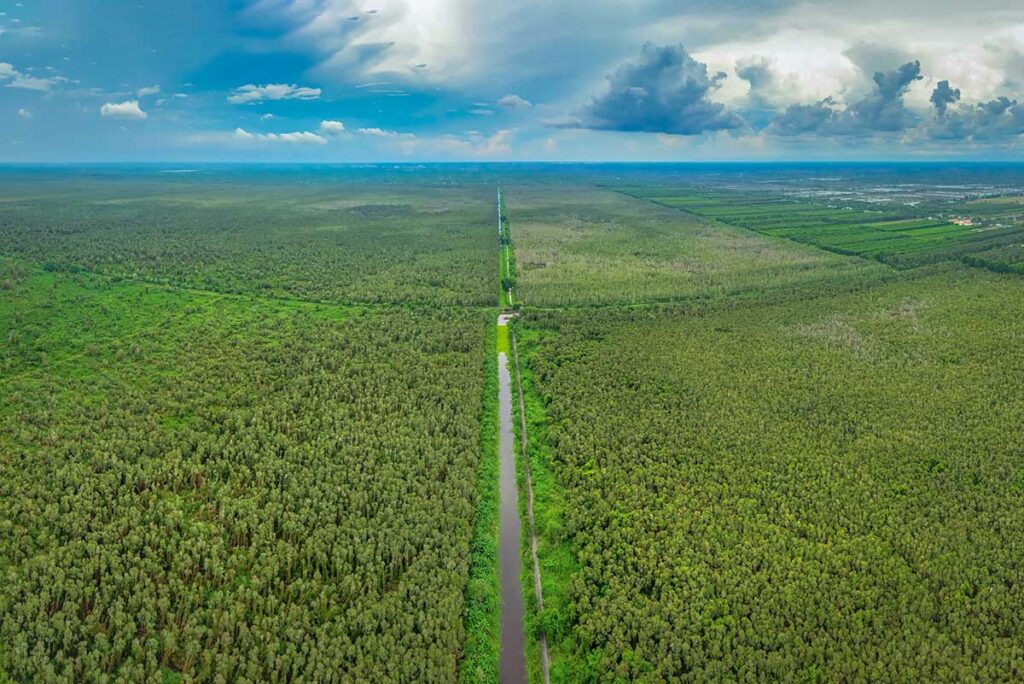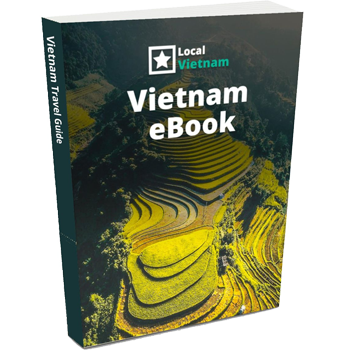What is U Minh Ha National Park?
Location and landscape
U Minh Ha National Park is located in Ca Mau Province, about 25–40 km from Ca Mau City, making it one of the most remote national parks in Vietnam. It forms part of the Ca Mau Cape UNESCO Biosphere Reserve, an area recognized for its fragile wetlands and unique ecosystems.
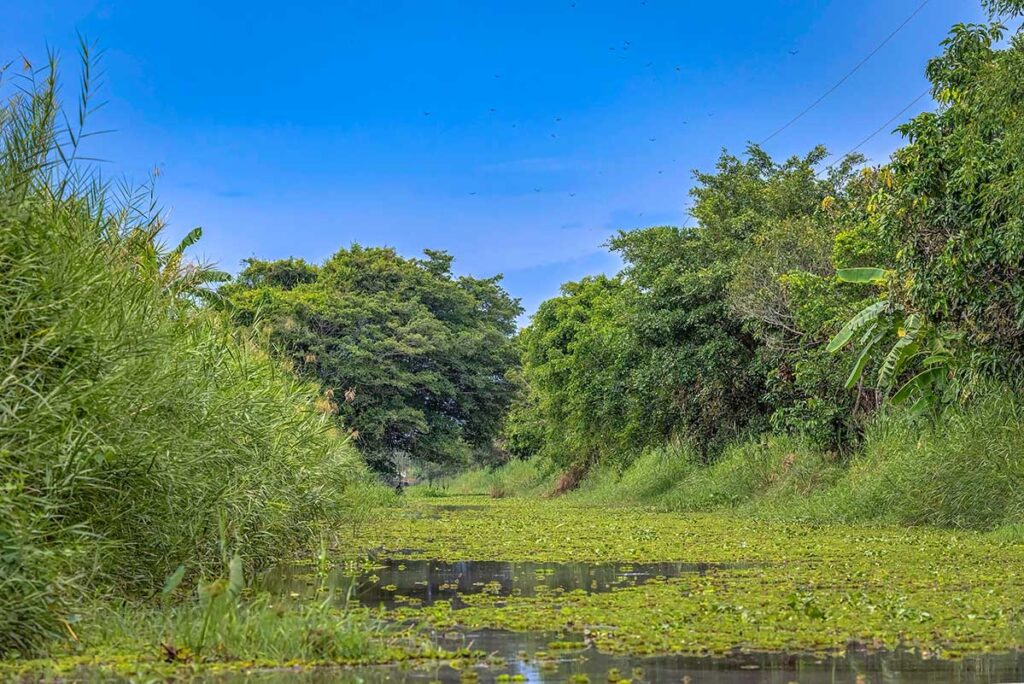
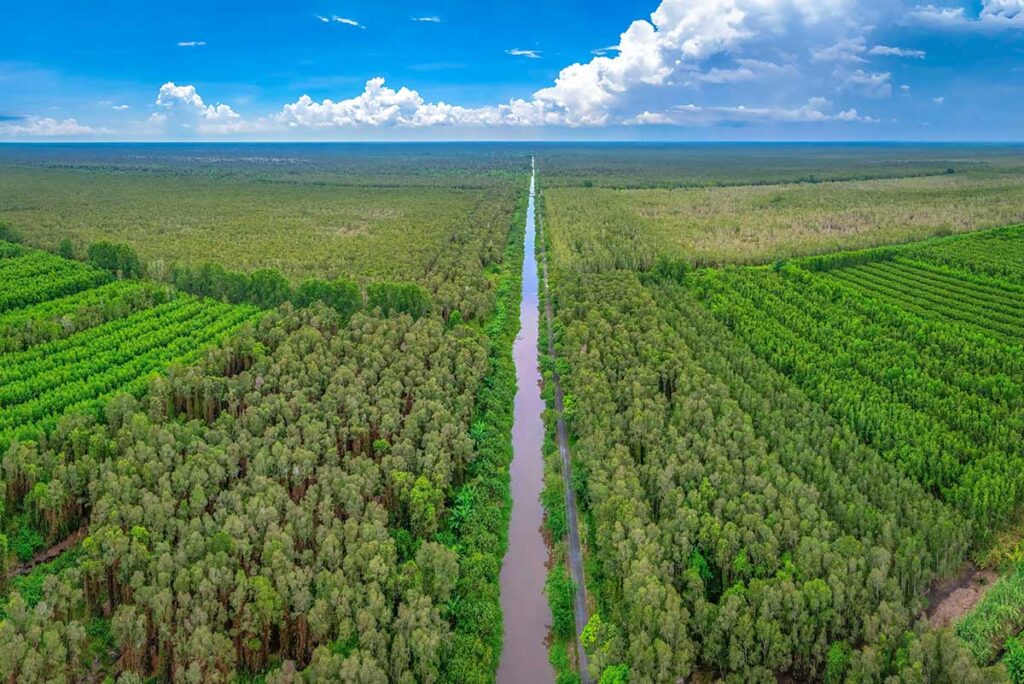
The park covers roughly 8,500 hectares, surrounded by a much larger buffer zone. Its landscape is dominated by peatland swamps, canals, reeds, and dense melaleuca (cajeput) forest that thrives in flooded and acidic soil. This is not a mountain or beach national park, but a flat and watery forest environment that feels very different from what most travelers expect when they hear the word “park.”
Brief history
The park was officially established in 2006, combining existing reserves such as Vo Doi Nature Reserve and part of Tran Van Thoi State Forestry Enterprise. Beyond its natural value, U Minh Ha has an important place in modern Vietnamese history: during both the French and American wars, the dense forest served as a revolutionary base and hiding place for resistance forces. Leaders such as Le Duan and Vo Van Kiet spent time here, giving the area a symbolic status in the south. Today, one of the park’s main challenges is fire prevention, and certain months (particularly around March and April) see restrictions on visitor access due to high fire risk.
Flora and fauna
The melaleuca forest is the dominant feature here, but the biodiversity is broader than it first appears. Botanists have recorded around 250 plant species, while the animal life includes wild boar, deer, civets, pangolins, monkeys, and reptiles such as snakes and turtles.
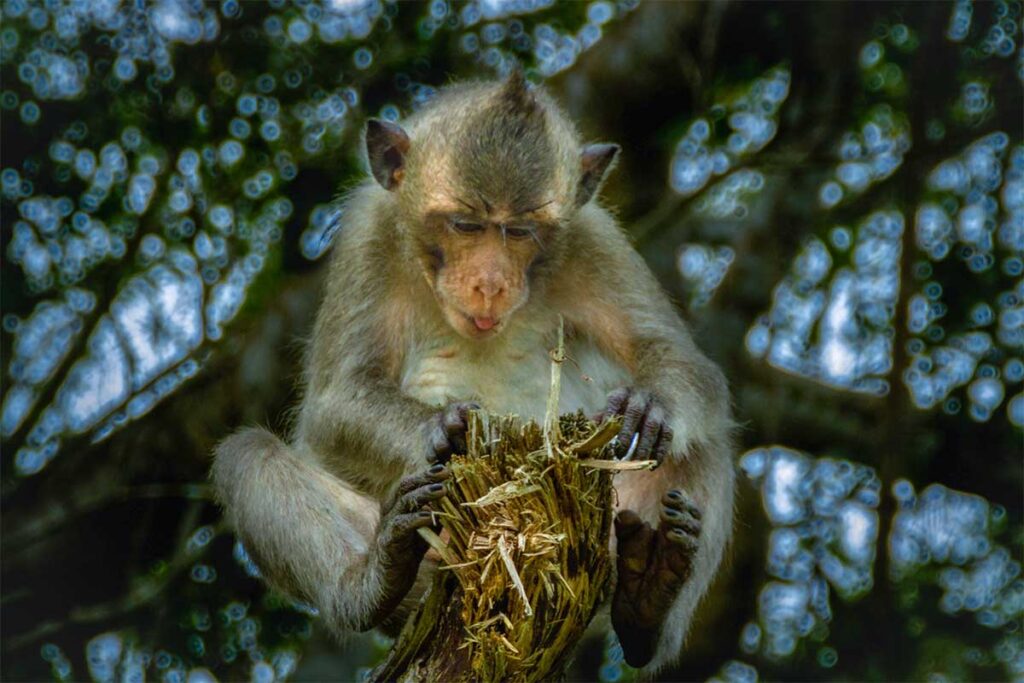
Birdwatchers may be especially interested: around 180 species of birds live or migrate through here, including storks, herons, darters, and egrets, with several species listed in Vietnam’s Red Data Book. The waterways hold plenty of fish typical of the Mekong Delta—snakehead, catfish, eels, and crabs—important both for the ecosystem and for the local communities who depend on them. While spotting rare animals is not guaranteed, the park does give a sense of the region’s ecological richness.
Local life and traditions
Unlike some parks that feel separated from local communities, U Minh Ha remains closely tied to the people living around it. Villagers rely on the forest for fishing, catching eels, planting fruit, and, most famously, beekeeping. The collection of wild honey from melaleuca flowers is not only an important livelihood but also officially recognized as a form of national intangible cultural heritage. For many Vietnamese, U Minh Ha is also linked with the humorous folk tales of Uncle Ba Phi, a character said to have lived here, whose exaggerated stories about giant snakes and crocodiles add a layer of legend to the forest.
What can you see and do at U Minh Ha National Park?
1. Climb the observation tower
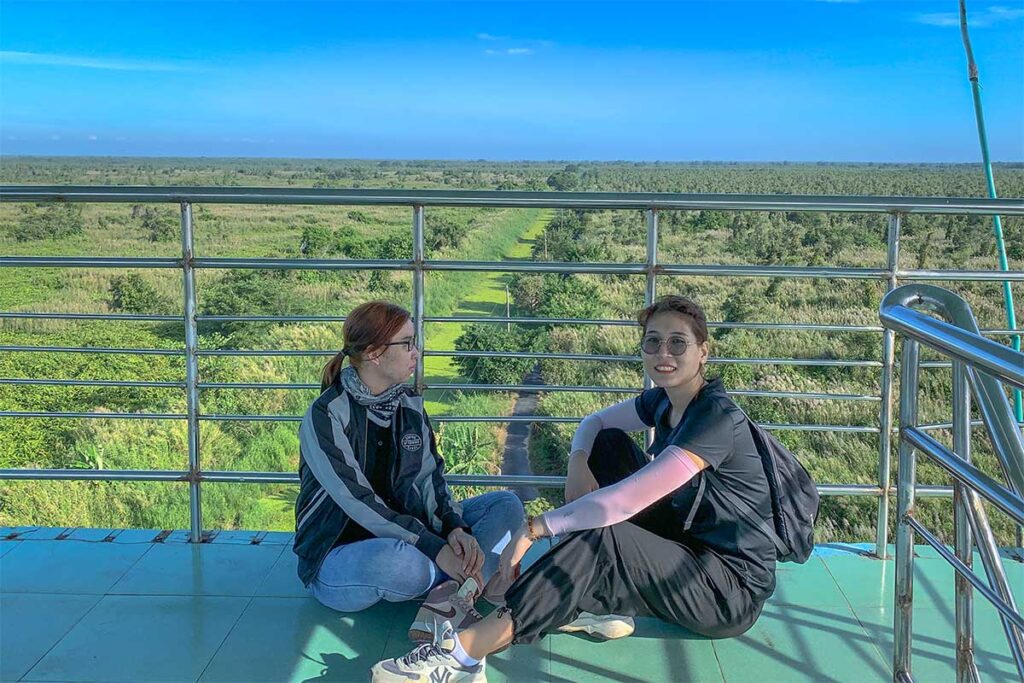
The park’s main landmark is a 24-metre high observation tower. From the top you get a sweeping view over the endless green canopy of melaleuca trees and the maze of canals cutting through the swamp. On clear days, the flat horizon makes the forest feel truly vast. This is the one activity that is always available, even if other services are closed.
2. Boat trips through the forest
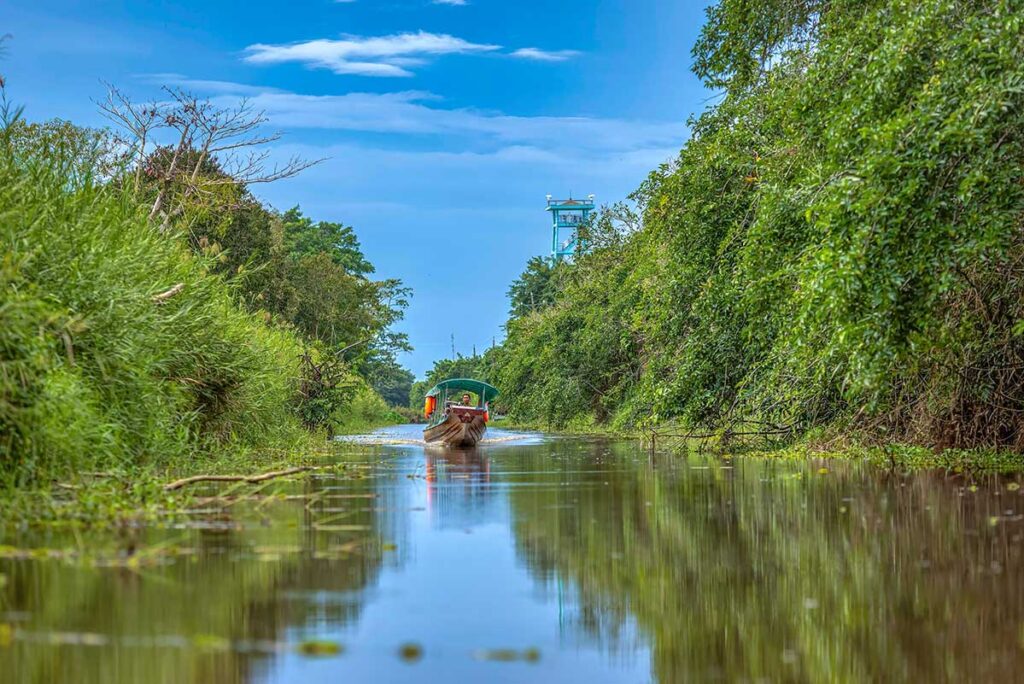
When water levels allow, you can hire a small motorboat or canoe to explore the canals.
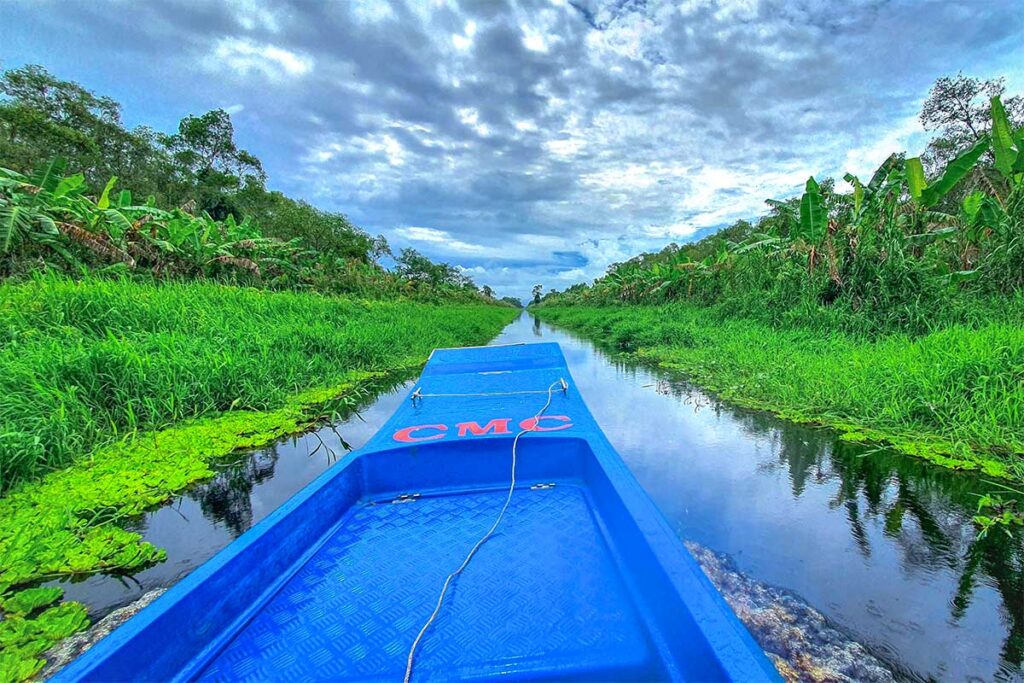
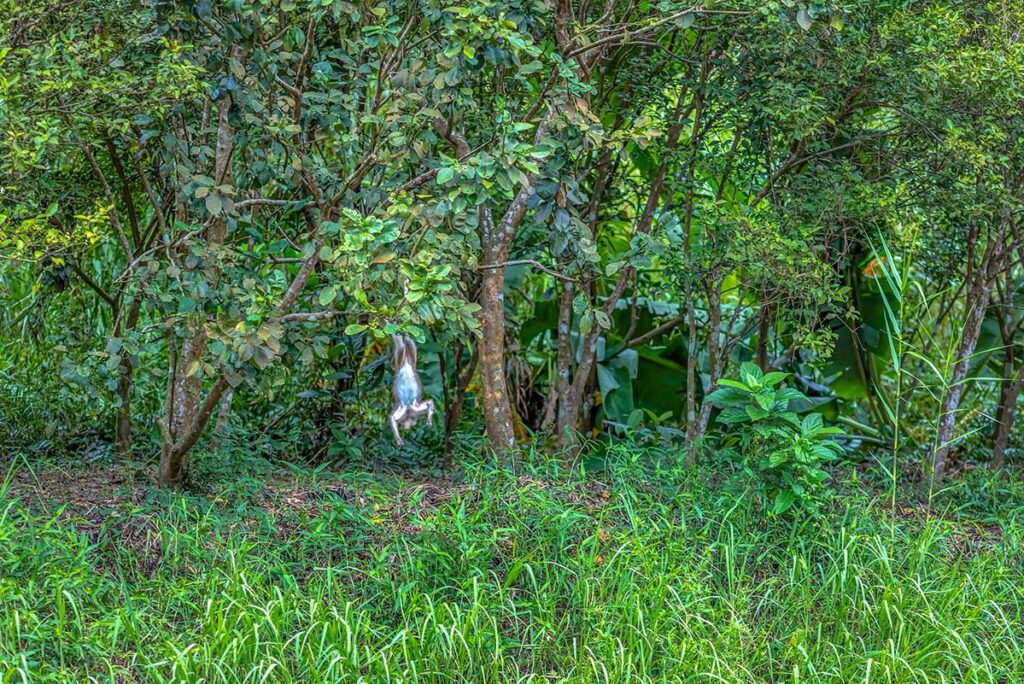
Floating through reeds and melaleuca gives you a better sense of the flooded forest landscape, and occasionally you might spot birds or other wildlife along the banks. Boat trips are not guaranteed year-round, so it’s best to confirm in advance or go with a guide who can arrange it.
3. Fishing and eel catching
Fishing is part of daily life here, and visitors can join in by renting a boat or following locals who set up traps for fish and eels. The waterways are still rich with species like snakehead and catfish, and it’s not unusual to catch a sizeable fish if you’re patient. This is more of a rustic experience than a touristic one, so don’t expect polished services—just the chance to get involved in something that locals do for a living.
4. Beekeeping and honey collection
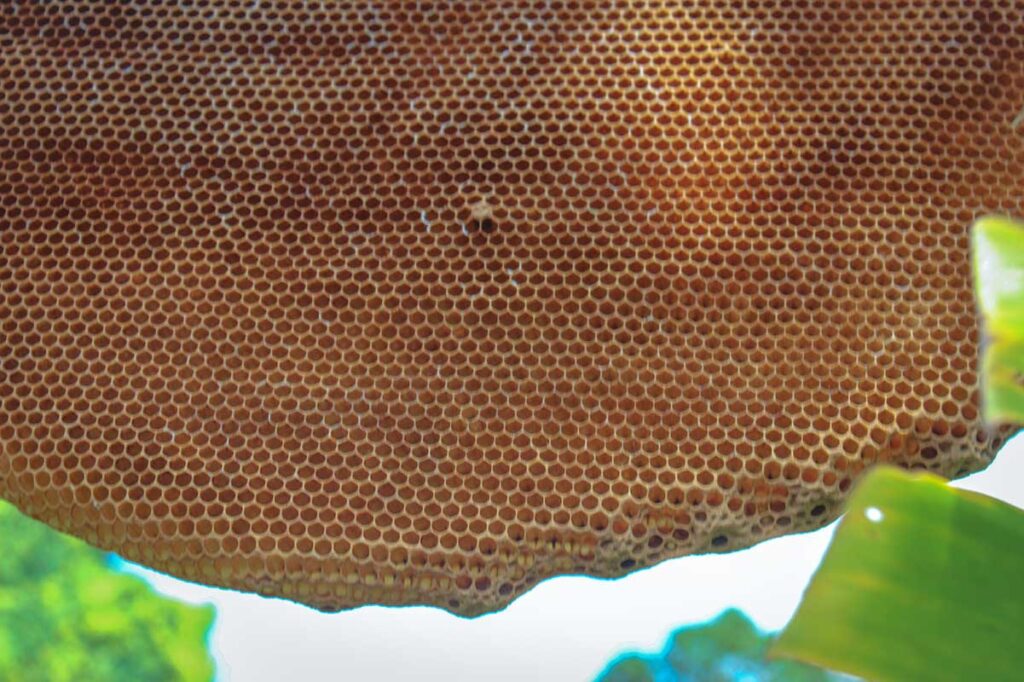
From December to June, the “bee season,” locals collect wild honey from hives built in the melaleuca forest. If you visit during this time, you may be able to follow beekeepers into the forest and taste freshly harvested honey on the spot. It’s one of the park’s most distinctive traditions and a reminder of how closely people’s lives are tied to the ecosystem.
5. Local food experiences
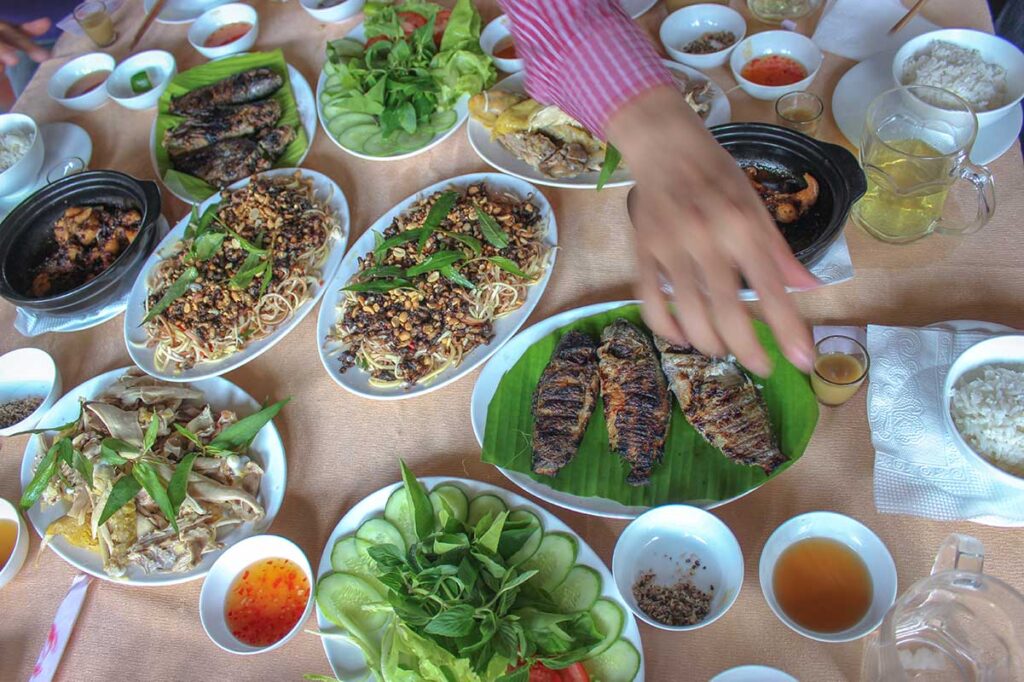
Food is another highlight, though it requires some planning. Rustic dishes made from fish, eel, or wild vegetables are common, along with more unusual items like snake or even field mouse. Grilled snakehead fish and hotpot with fresh herbs are local favorites, often paired with homemade “forest wine.” A few simple restaurants operate near the park, but it’s better to arrange meals in advance—either through a guide or by calling ahead.
How to visit U Minh Ha National Park
Base city
The easiest base for visiting U Minh Ha is Ca Mau City, located about 25–40 km away. The drive takes roughly an hour by car or motorbike. Since there’s no accommodation inside the park itself, most travelers return to the city after their visit or stay in nearby homestays.
Getting there
From Ho Chi Minh City, you can either fly directly to Ca Mau (a short domestic flight) or take a long-distance bus, which usually takes around 8–9 hours. Once in Ca Mau, you’ll need to continue by taxi, motorbike, or with a pre-arranged tour to reach the park entrance. Be aware that directions are not always clear—Google Maps can be misleading, and the park is not as well signposted as more touristy destinations. Asking locals or arranging transport in advance will save time and frustration.
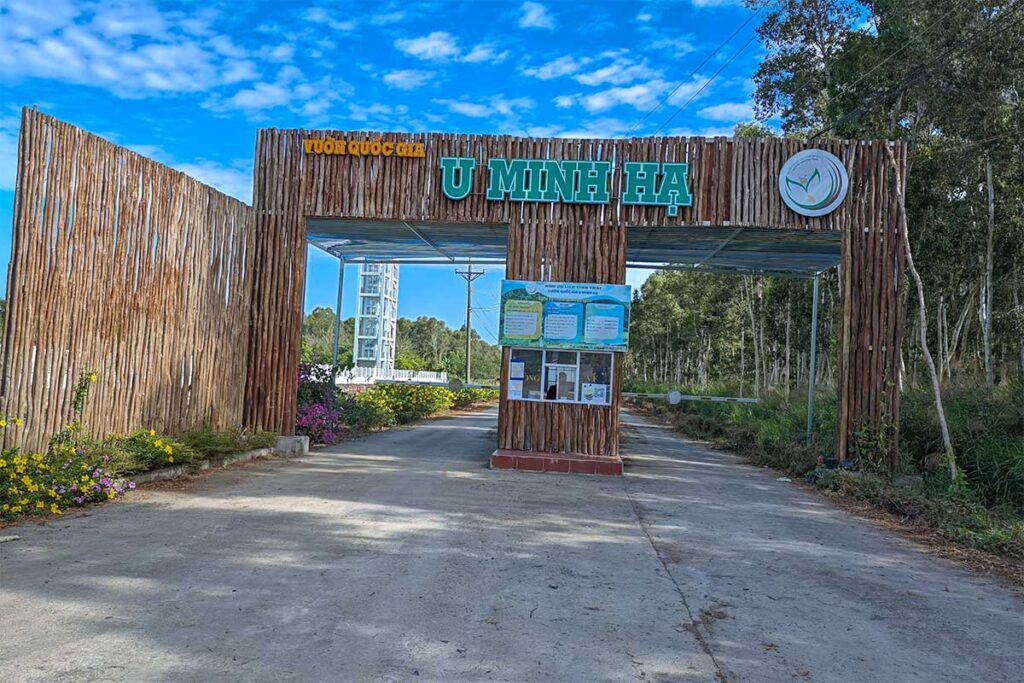
Visiting independently vs with a guide
It’s possible to visit on your own if you have your own transport, but expect limited services on arrival. Activities like boat trips or meals may not be available unless you pre-arrange them, and some visitors find parts of the park unexpectedly closed. Going with a local guide or as part of a tour can make the experience smoother—they can arrange boat rides, help with meals, and combine U Minh Ha with other highlights in Ca Mau Province such as Cape Ca Mau or Thi Tuong Lagoon. For most foreign tourists, this makes the visit both more practical and more rewarding.
Tips for visiting
Where to stay
There is no accommodation inside U Minh Ha National Park. Most travelers stay in Ca Mau City, which has the widest choice of hotels and guesthouses. For something more local, a few homestays in the surrounding villages offer simple stays, but don’t expect much comfort or English-speaking hosts.
What to bring
Pack for the forest rather than a tourist site. Long sleeves and insect repellent are essential, as mosquitoes can be fierce, especially in the rainy season. A hat and sunscreen are useful year-round, while a lightweight raincoat is recommended if you visit during the wet months. Bring some cash, as services inside and around the park don’t take cards.
Best time to visit
The rainy season (November–April) is when the park looks most alive, with higher water levels that make boat trips possible and the forest lush and green. The dry season (May–October) brings easier access by road and less mud, but water-based activities are limited. In March and April, visitor access may be restricted due to fire-prevention measures, so it’s worth checking before you go.
Is U Minh Ha National Park worth visiting?
U Minh Ha National Park offers something unique: a flooded melaleuca forest, traditional honey collecting, and a landscape you won’t see in many other parts of Vietnam. It feels authentic because it’s not heavily tourist-oriented, but that also means infrastructure is limited and the park is not always straightforward to visit.
For travelers who enjoy remote nature, birdlife, and learning about local traditions, it can be a rewarding stop. However, don’t expect a polished visitor experience or guaranteed wildlife encounters. Without a guide, it can be confusing to arrange boat trips or even find the right entrance.
Overall, U Minh Ha is best visited as part of a broader Ca Mau itinerary that also includes Cape Ca Mau, nearby mangrove forests, or Thi Tuong Lagoon. On its own, it may feel too simple for the effort, but as part of exploring Vietnam’s southernmost province, it adds depth and variety to the journey.
